Side Projects / Dark Matter
Dark Matter and Dark Energy are always on the forefront of my interests since they are probably the most annoying unresolvable riddles in science today. While in most other fields progress has been fundamental and we are basically refining the science, looking at places that we couldn’t even imagine some years ago, when it comes to the basic constituents of our universe we are extremely clueless.
We sort of know that Dark Energy and Dark Matter comprise 95% of the current universe as we can measure it, yet these findings have come to a surprise as we have not theory whatsoever to explain them, and experimental evidence has been very limited.
This section presents no new research on the Dark sector; it is simply an overview of our understanding at the moment.
Evidence for Dark Matter dates back at least 50 years. The first clues came from observing the speeds of objects at the outskirts of the galaxies. They were moving much faster that Newtonian (or even general relativity) mechanics were predicting, suggesting there is another gravitational source in the galaxies that was not visible.
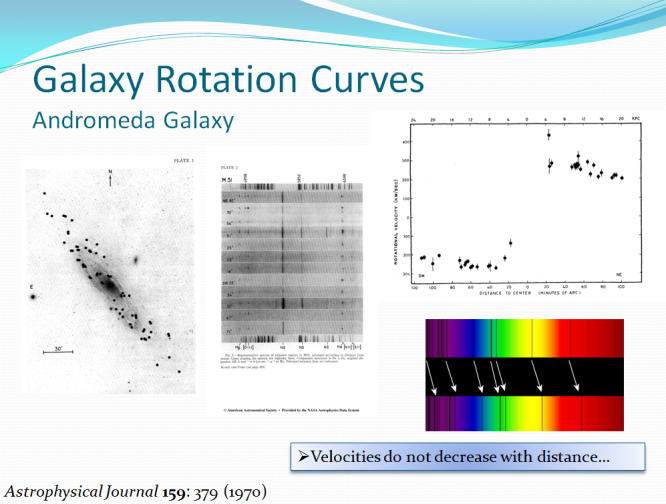
In addition, the motion of galaxies in galaxy clusters was much faster that expected. And not just be a little bit: 5 times more matter that what was visible should be there in order to account for the super fast motions.
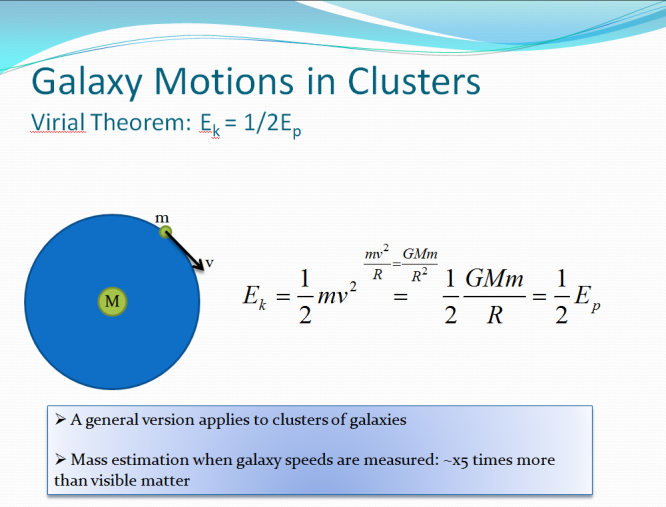
Furthermore, measuring the X-Rays and calculating the temperature of the gas in clusters, the mass of the system that causes such radiation could be estimated (plasma gas in clusters is accelerated and heated due to gravity). Once again, the mass estimated was roughly 5 times larger than the normal visible mass (i.e. baryonic mass, caused by baryon particles such as protons).
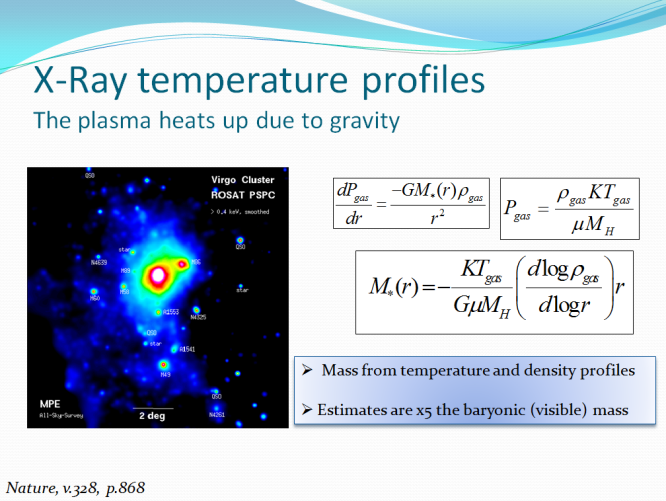
However the strongest evidence probably come from Big Bang Nucleosynthesis (BBN), the process through which the elementary particles formed into elements. Roughly 3 minutes after the BB, there where 7 protons for every neutron in the universe (since protons are slightly lighter - this number comes from the theory). As the temperature drops while the universe expands, fusion is allowed, and the particles merge onto heavier elements such as hydrogen and helium, forming the first atoms.
Around 20 minuted after BB, the universe has expanded more, the density has dropped, and no more fusion can take place. Whatever happened, happened, and no more atoms are formed after this point. The theory predicts 75% Hydrogen and 25% Helium in the universe, with traces of heavier elements.
Note that all heavier elements were not created in BB but much later at the center of the stars.
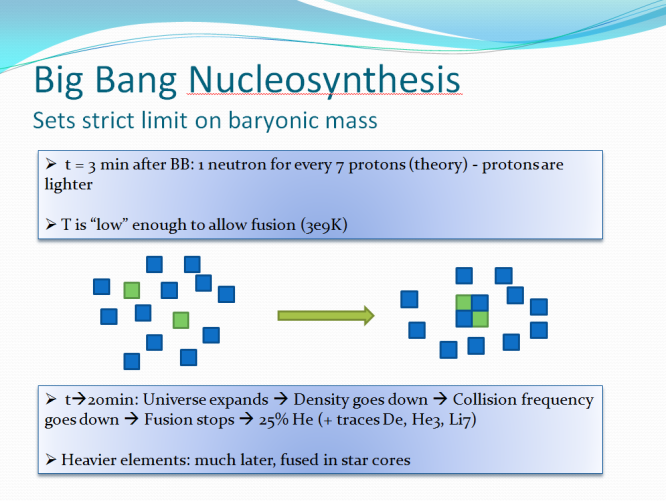
Today, the amounts of hydrogen and helium we measure in the distant, clean parts of the universe are exactly what is predicted by BBN. No more, no less. At the same time, this is only 5% of the total mass density measured in the universe today through the Cosmic Microwave Background Radiation.
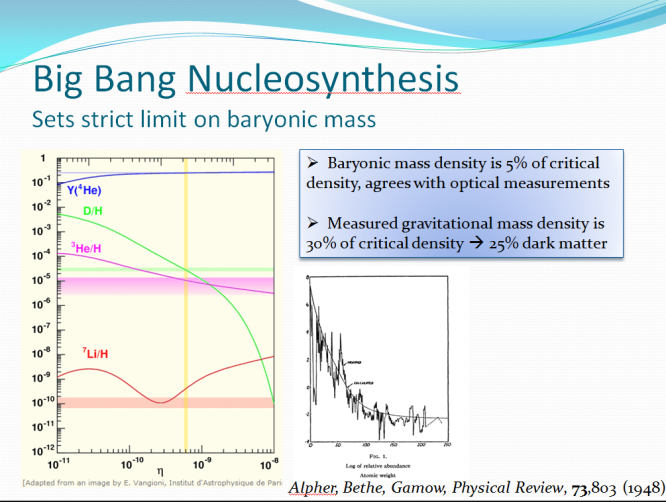
The profile of the microwave background radiation, the light from the early years of the universe (300,000 years after BB to be exact where the temperature dropped and light was first free to propagate), is collected today. Its distribution indirectly provides an exact measurement of the density of matter in the universe. It shows that the universe is flat, that 30% is gravitational density (5% baryonic matter), and a mysterious 70% is left and named Dark Energy.
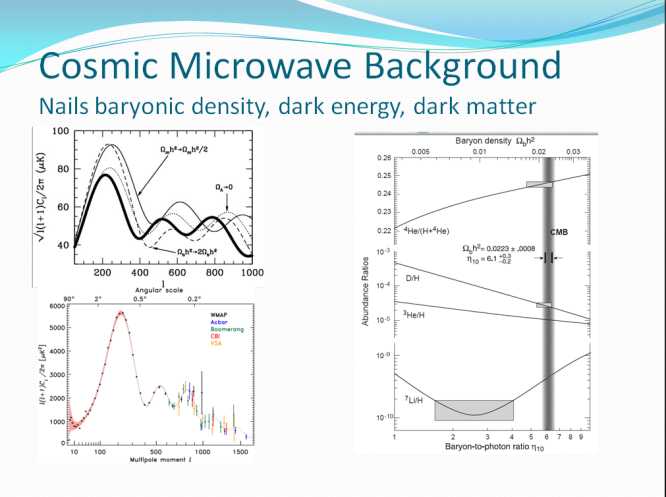
The most pronounced visible example of dark matter is the bullet cluster, where one galaxy has ran through another one. The baryonic mass was calculated through stars (visible light) and the plasma light (X-rays). The total mass was calculated through gravitational lensing, by measuring the bending of light rays due to the total gravity field. The results were plotted in different colors, and show that while baryonic mass had slowed down due to the collision (red colors), the total gravitational mass did not and simply passed without collisions - this is the prediction of dark matter, that it provides mass without reular collisions. This is the blue color in the pictures below. For the first time, the two types of matter have been observed separately.
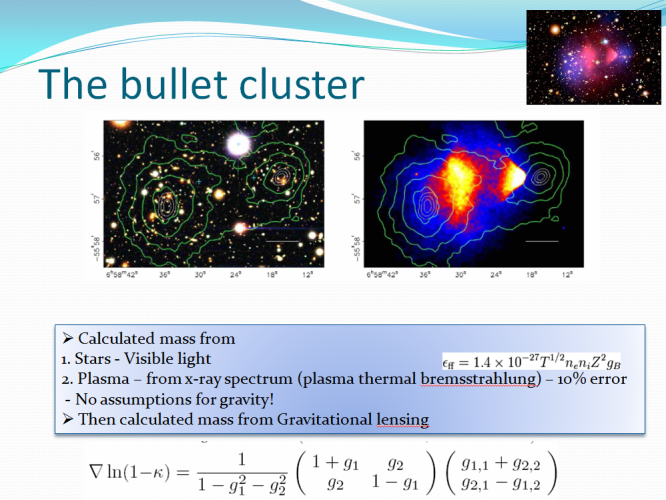
The hunt for dark matter particles is on. We are actively looking as to what actually dark matter is, as well as what dark energy is. This is probably yhe single most important question we face in our understanding of the universe today.

